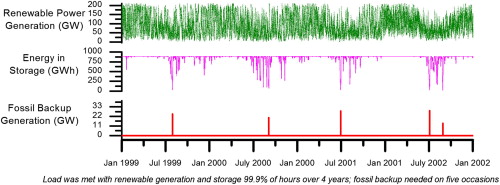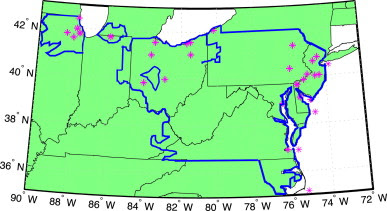

| Visitors Now: | |
| Total Visits: | |
| Total Stories: |

| Story Views | |
| Now: | |
| Last Hour: | |
| Last 24 Hours: | |
| Total: | |
The lowest cost combinationof wind, solar and storage for the northeast United States for all renewable option for 2030
From
NBF – This actually looks like a more credible and realistic plan. Unlike the crappy plans by Stanford's Professor Jacobson. This plan looks like it could be worth some further consideration. General limitations are I doubt they consider any economic growth that would require more power (it assumes you stay at the current energy requirements). I would also like to see how they are handling the power grid costs and if the grid is in the right places. Usually renewables need more power grid extensions which are costly and time consuming.
They modeled wind, solar, and storage to meet demand for 1/5 of the USA electric grid.
► 28 billion combinations of wind, solar and storage were run, seeking least-cost.
► Least-cost combinations have excess generation (3 times the load), thus require less storage.
► 99.9% of hours of load can be met by renewables with only 9–72 h of storage.
► At 2030 technology costs, 90% of load hours are met at electric costs below today's.
They use widespread geographical distribution the intermittent sources (wind farms and photovoltaic installations) all parts of the grid would have enough power. (windy and sunny in come parts to make for calm and overcast areas in other parts)
A map showing the outlines of the current PJM system (blue line) and of the inland and offshore meteorological stations used for the wind data (pink asterisks). (For interpretation of the references to color in this figure legend, the reader is referred to the web or PDF version of this article.)
See more and subscribe to NextBigFuture at 2012-12-15 12:22:20 Source: http://nextbigfuture.com/2012/12/the-lowest-cost-combinationof-wind.html
Source:




